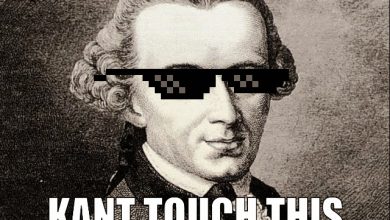How the Gunpowder Plot Shaped the Religious Future of England
The shift in King James' religious policies pre and post assassination attempt

King James I and VI (of England and Scotland respectively) is perhaps best known for the failed assassination attempt against him, which was led by Robert Catesby and famously included Guy Fawkes. Among the many impacts of this foiled plot, it is important to remember the significant influence it had on the religious policies in James’ domains. This was by no means the beginning of his deep interest in religious politics, but it forever changed the future direction of England’s religion.
James in Scotland
James’ interest in theology was readily apparent well before he gained the crown of England. In Scotland he laid out his The True Law of Free Monarchies which set forward his ideas of the divine right of kings. The theory that was later used by the likes of Louis XIV to justify absolutism – though it must be pointed out that this application of the theory was not apparent in James’ own practice of kingship.
He also tried to bring the Scottish church under a more centralised system with the Black Acts. However, this was only partially successful, as James was compelled to allow the continuation of the General Assembly in running the church, which he had hoped to bring it under royal and episcopal control. This was revisited later, after he had gained the throne of England, at which point he managed to push through the reforms he had sought.

Additionally, James considered witchcraft to be a serious problem which needed to be addressed. After attending the North Berwick Witch Trials, he produced a dissertation titled Daemonologie, in which he attempted to both demonstrate and describe witchcraft and the reasons for persecuting people for it.
James in England
The church in England was already closer to James’ ideal than the one in Scotland had been. This was largely thanks to the way in which Protestantism had become the state religion. This meant less significant shifts in dogma; at first, it had mostly consisted of replacing the authority of the Pope with that of the king. This fit nicely with James’ ideas on the divine right of kings. At first, James was inclined to largely leave remaining Catholics alone, as he was busy dealing with the Puritan presence in the country. James met with the Puritans at the Hampton Court Conference; here, they presented their Millenary Petition, a document containing requests for Church reform. The conference was relatively successful in coming up with changes that suited both parties. James accepting Puritan arguments about combating absenteeism and pluralism in the church, and these also helped James put forward his idea of Godly rule.
In this conference James displayed a significantly more relaxed posture to English Puritans than he had to the Scottish ones, who were more hostile to his vision for the church. In fact, the bishops failed to win over the king when he changed old orders that they approved of. However, as historian William Lamont argued, James biggest failing on dealing with the Puritans was not intransigence, but that while he liked the showy gestures and debates he was relatively unconcerned whether his bishops actually carried out his reforms.
James also commissioned an official Church of England translation of the bible (the King James Bible) to be translated from the original languages they were written in. This version would become essentially undisputed within the English speaking world.
The Gunpowder Plot
However, while his reforms had managed to appease the Puritans, James had underestimated the discontent brewing among the Catholic community in England. In 1605 the band of plotters led by Robert Catesby set in motion their plan to kill the king and much of the Protestant leadership by blowing up the Houses of Parliament. The plan was to stage a coup and place James’ daughter Elizabeth on the throne as a Catholic monarch. This plot was one of extremists, with the pope himself having spoken against the idea of a violent re-conversion of England.

The plan was to dig under the house of Lords and from there to detonate a huge quantity of gunpowder underneath it, enough to reduce the House of Lords to rubble. The plot, though, was discovered thanks to an anonymous letter sent to Baron Monteagle, which warned him not to attend Parliament that day. The letter was promptly passed on, and reached the king by November 1st. Guy Fawkes was discovered with the gunpowder on November 5th and the remaining plotters were killed or captured soon after.
Aftermath of the Gunpowder Plot
After the failure of the plot, James’ policy towards Catholics became substantially harsher. He introduced an Oath of Allegiance which his subjects had to swear. Denounced by the Pope, it was considered largely unacceptably by Catholics, especially as it contained a clause against the Pope’s deposing powers.
On top of this, Catholics were increasingly barred from various professions such as law and from voting either locally or for Parliament (these prohibitions lasted until 1797 and 1829 respectively). James justified this persecution to Henry IV of France that English Catholics “were so infected by the doctrine of the Jesuits, respecting the subordination of the royal to the papal authority”. Additionally, rhetoric against Catholics intensified with the assertion that the Pope represented the Antichrist and even the suggestion of mandating that they wore red hats to identify themselves.
Conclusion

Ultimately, James’ policies had significant impacts in the way that the Church of England developed. The direction in which he set it eventually led to the conflict between the established church and Puritan movements, which he distrusted to the point of describing the Calvinist model as “a pope in every parish”. His son Charles I would then go on to interpret the principle of the divine right of kings as justification of absolutism. This heavily contributed to the eruption of the English Civil Wars when combined with unresolved religious discontent from the Puritans, among other things.





